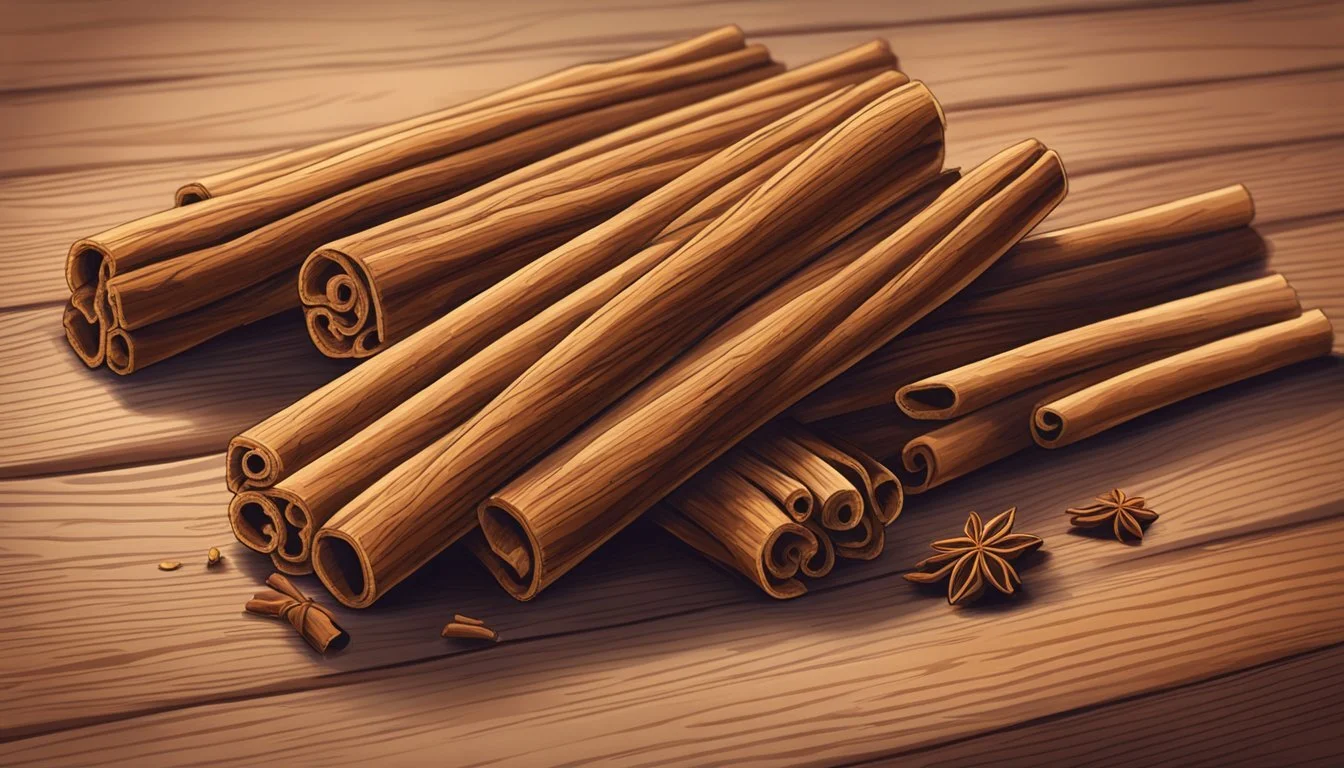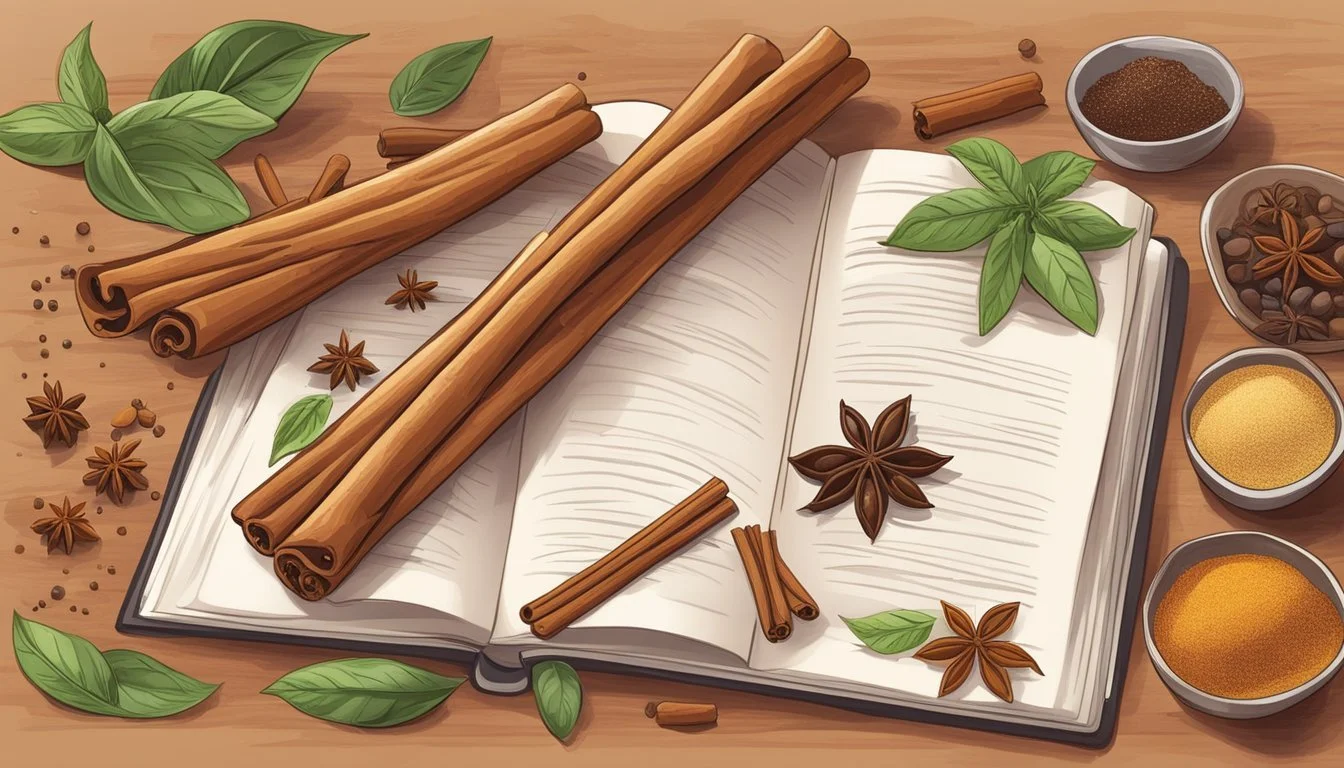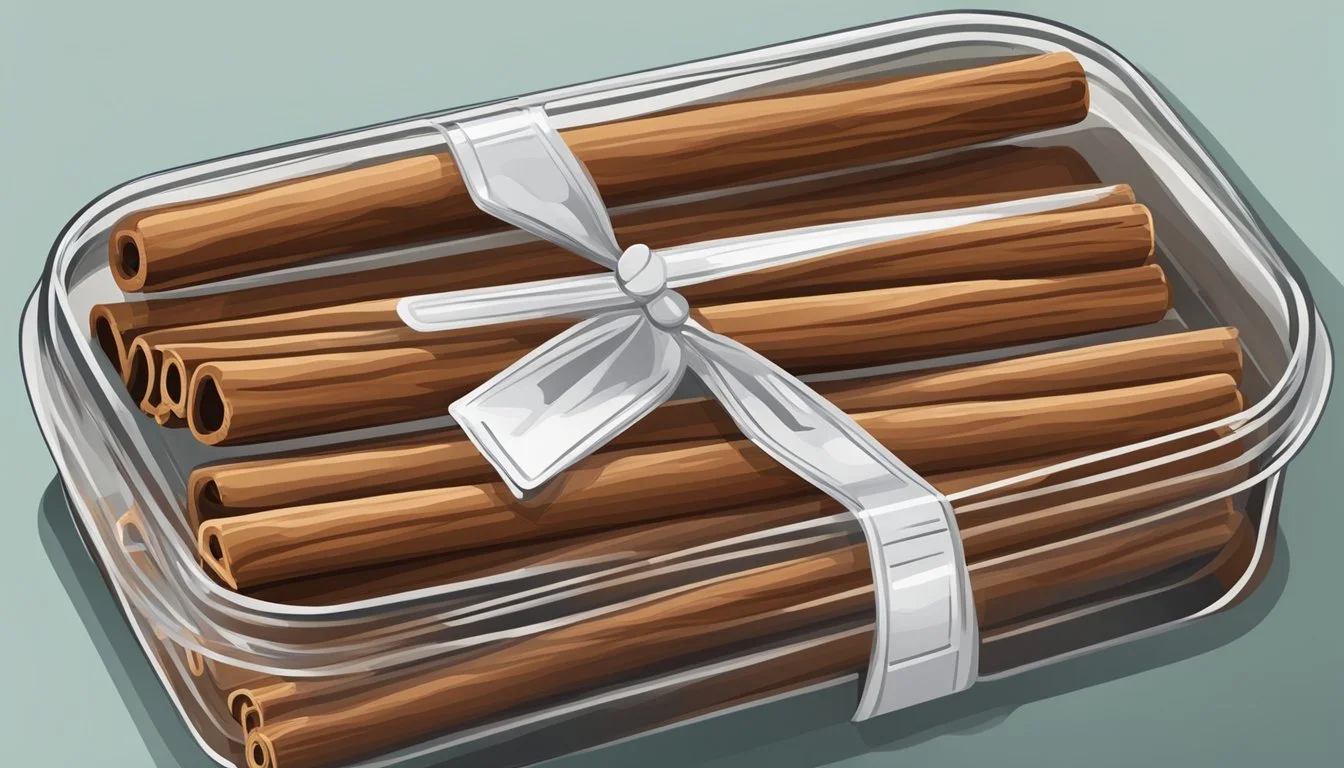Do Cinnamon Sticks Go Bad?
Understanding Shelf Life and Storage
Cinnamon sticks, known for their warm and aromatic flavor, are a staple in both sweet and savory dishes. Many wonder if these versatile spices can go bad over time. Yes, cinnamon sticks can go bad if not stored properly. The primary culprits behind their deterioration are exposure to moisture, heat, and pathogens, leading to mold growth and a foul odor.
These sticks have a remarkable shelf life, with their quality and potency enduring for several years when stored correctly. To ensure cinnamon sticks remain fresh and flavorful, it is essential to keep them in a cool, dark, and dry place. This proper storage can help them maintain their best qualities even after four years.
Checking for signs of spoilage, such as mold, dark spots, or an off smell, is crucial before use. Noting the date of purchase can also be a helpful indicator of their freshness. Properly stored, cinnamon sticks remain a valuable addition to any spice collection, ready to enhance the taste of numerous culinary creations.
Understanding Cinnamon
Cinnamon is derived from the bark of a tree and is available in different varieties. It provides numerous health benefits, from anti-inflammatory properties to potential regulation of blood sugar levels.
Varieties of Cinnamon
Cinnamon comes mainly in two types: Ceylon and Cassia.
Ceylon cinnamon, often referred to as "true" cinnamon, is native to Sri Lanka and southern parts of India. It has a lighter, sweeter flavor and is typically more expensive due to its delicate nature and limited production.
Cassia cinnamon is more common and is predominantly found in supermarkets. It has a stronger, more pungent flavor and is grown primarily in China and Indonesia. While Cassia is less expensive, it contains higher levels of coumarin, which can be harmful in large doses.
Proper labeling is key to distinguishing between these types as they not only differ in flavor but also in potential health implications.
Health Benefits of Cinnamon
Cinnamon is packed with antioxidant properties, which help combat oxidative stress and reduce the risk of chronic diseases.
It also exhibits anti-inflammatory properties, potentially aiding in reducing inflammation in the body, which is beneficial for individuals with conditions like arthritis.
Additionally, cinnamon may help in regulating blood sugar levels. Some studies suggest it improves insulin sensitivity, making it a useful supplement for people with type 2 diabetes.
Cinnamon also contains essential oils like cinnamaldehyde, which contribute to its distinctive aroma and therapeutic effects. These essential oils have antimicrobial properties that could help fight infections and improve oral health.
Using cinnamon in moderation can be part of a healthy diet, but it's crucial to be mindful of the type and quantity used, especially due to the varying levels of coumarin in different varieties.
Shelf Life and Expiration
Cinnamon sticks can last for a significant amount of time if stored properly. They don't spoil in the traditional sense but can lose potency and exhibit signs of degradation.
Determining Freshness
The freshness of cinnamon sticks can be assessed through their aroma, taste, and appearance. Fresh cinnamon sticks emit a strong, pleasant aroma and have a potent, sweet-spicy taste.
To test, break a small piece and crush it. If it releases a robust aroma, it is still fresh. Inspect visually for signs such as mold or discoloration, which indicate the need to discard them.
Factors Affecting Longevity
Several factors affect the longevity of cinnamon sticks, including light, moisture, temperature, and humidity. Exposure to light can lead to photodegradation, reducing flavor. High humidity and moisture promote mold growth, ruining the sticks.
Store cinnamon in airtight containers, away from direct light and heat sources, to maintain quality. Ideal storage conditions significantly prolong the shelf life.
Expiration and Signs of Spoilage
While cinnamon sticks can stay usable for years, they do have an expiration date. Common signs of spoilage include mold growth, a musty smell, and changes in color and texture.
Expired cinnamon loses its characteristic aroma and taste. It is not harmful but may not add the desired flavor to dishes. Discard any cinnamon sticks showing signs of spoilage to ensure food safety.
Proper Storage Techniques
Cinnamon sticks can maintain their flavor and potency for several years if stored correctly. Key factors include avoiding moisture, light, and heat, and using airtight containers.
Ideal Storage Conditions
To preserve cinnamon sticks, store them in airtight containers. Glass or metal containers are preferable, as they block light and maintain a consistent environment.
Cinnamon should be kept in a cool, dark place like a pantry. It's important to avoid areas exposed to direct sunlight or fluctuating temperatures. The optimal storage temperature is room temperature, ideally between 68-72°F (20-22°C). Avoid storing cinnamon sticks near heat sources, such as stoves or ovens, and ensure they are kept dry.
Extending Shelf Life
To extend the shelf life of cinnamon sticks, proper storage is essential. Labeling containers with the date of purchase can help keep track of freshness.
For long-term storage, freezing cinnamon sticks is an option. Place them in airtight freezer-safe containers to prevent moisture and odor absorption. When ready to use, thaw the sticks at room temperature. Proper storage techniques can keep cinnamon sticks flavorful and aromatic for up to 4-5 years, maximizing their use in recipes.
Usage and Culinary Application
Cinnamon sticks, versatile and aromatic, find numerous uses in both cooking and alternative applications. They offer a rich flavor to a variety of dishes and serve functional purposes beyond the kitchen.
Incorporating into Dishes
Whole cinnamon sticks add depth to savory dishes such as stews, curries, and braised meats. They release their flavor slowly, making them perfect for slow-cooked recipes. Baking enthusiasts often use them in puddings, pies, and cakes to infuse a warm, spicy note.
In sweet applications, cinnamon sticks can be simmered in milk or cream to enhance desserts like custards and rice puddings. They are essential in drinks like mulled wine, chai tea, and hot chocolate, offering a comforting aroma and taste.
A spice grinder or mortar and pestle can pulverize cinnamon sticks into ground cinnamon, which is versatile for baking and seasoning.
Alternative Uses of Cinnamon Sticks
Beyond cooking, cinnamon sticks serve as a natural air freshener. Boiling them with citrus peels creates a pleasant scent that spreads throughout a home. They can be used in crafting projects such as making potpourri or scented candles.
In some cultures, cinnamon sticks feature in traditional remedies, known for their potential benefits like improving digestion. They are also used as a stirring stick in warm beverages, adding flavor without using powdered cinnamon.
For those who prefer a natural approach to pest control, cinnamon sticks can repel insects due to their strong scent. This makes them a practical and aromatic addition to any pantry or storage area.
Replacing and Discarding
Knowing when to replace cinnamon sticks and how to safely discard them is crucial for maintaining their best quality. This section will focus on the signs of spoilage and proper disposal methods.
When to Replace Cinnamon Sticks
Cinnamon sticks, like other spices, lose potency over time. They don't spoil in the sense of becoming harmful, but their flavor and aroma can degrade. Key signs that they need to be replaced include:
Unnatural Smell: Fresh cinnamon has a warm, spicy scent. If it smells musty or lacks aroma, it’s time to replace it.
Visual Changes: Look for mold or discoloration. Any signs of moisture damage indicate spoilage.
Age: Cinnamon sticks kept in ideal conditions can last up to four years. If they are older, even if stored properly, their potency will likely be diminished.
How to Safely Discard Spices
Once cinnamon sticks are expired or have lost their potency, they should be discarded properly. Here are some steps to follow:
Avoid Tossing Whole Sticks: Whole sticks in the trash can attract insects. Instead, break them into smaller pieces.
Composting: If you compost, dried spices like cinnamon sticks can be added. Crush them into smaller bits to expedite decomposition.
Sealed Disposal: Place expired cinnamon sticks in a sealed bag before throwing them away. This helps prevent any potential contamination or pest attraction.
Ensuring spices like cinnamon are replaced and discarded correctly helps maintain the quality of your pantry and avoids spoilage risks.
Prevention and Treatment
Proper storage of cinnamon sticks is essential to maintaining their quality and preventing contamination and spoilage. Key factors include protecting them from humidity, odors, and pathogens.
Preventing Contamination and Spoilage
Storage Conditions:
Cinnamon sticks should be kept in a cool, dark, and dry place. Heat and moisture can degrade their quality. Avoid storing them near sources of strong odors, which can be absorbed by the cinnamon.
Airtight Containers:
Use airtight containers made from materials like glass, ceramic, or metal. Plastic can be less ideal for long-term storage. These materials provide a better seal against air and moisture.
Humidity Control:
Keep cinnamon sticks away from high humidity areas. Moisture exposure can lead to mold and pathogen growth. Maintaining low humidity helps preserve their aroma and flavor.
Inspect Regularly:
Check cinnamon sticks for signs of spoilage, such as mold, unusual odors, or insects. If detected, discard affected sticks and clean the storage area.
Avoid Contaminants:
Store away from kitchen areas prone to contamination. Cross-contamination with other spices or foods can introduce pathogens or insects. Keep the storage location clean and free from potential contaminants.
Best Practices in Cinnamon Stick Management
Proper management of cinnamon sticks involves effective labeling and periodic quality evaluation to ensure they retain their flavor and potency. This ensures that the spice remains a valuable asset in the kitchen.
Effective Labeling and Inventory
Labeling and inventory management play a crucial role in maintaining cinnamon sticks. Always label containers with the purchase date. This helps track how long the cinnamon sticks have been stored.
Store cinnamon sticks in airtight containers to prevent exposure to moisture, which can lead to mold growth. Place these containers in a cool, dark place such as a kitchen cabinet or spice rack to protect them from heat and sunlight.
Organize your dry spices and ground spices separately to avoid cross-contamination. Utilize a systematic inventory method, noting the oldest stock first. This ensures older spices are used before they lose their aroma and flavor.
Evaluating and Testing Quality
Regularly evaluating the quality of cinnamon sticks is essential for maintaining their use in culinary applications. Check for visual signs such as mold, and test the aroma to ensure it remains strong and fragrant.
If the sticks emit a faint or off smell, they have likely lost their potency. Break a small piece and taste it; the flavor should be warm and aromatic. If the flavor is weak, the cinnamon sticks are past their prime.
Keep in mind that even well-stored cinnamon sticks can deteriorate after a few years. Checking quality periodically ensures that only the best cinnamon sticks are used in your cooking, maximizing the spice's effectiveness and enjoyment.






